Soda Can Crusher
You could use your foot, your hands, or even your head (not advised) to crush a soda can. But nothing compares to the fun you’ll […]
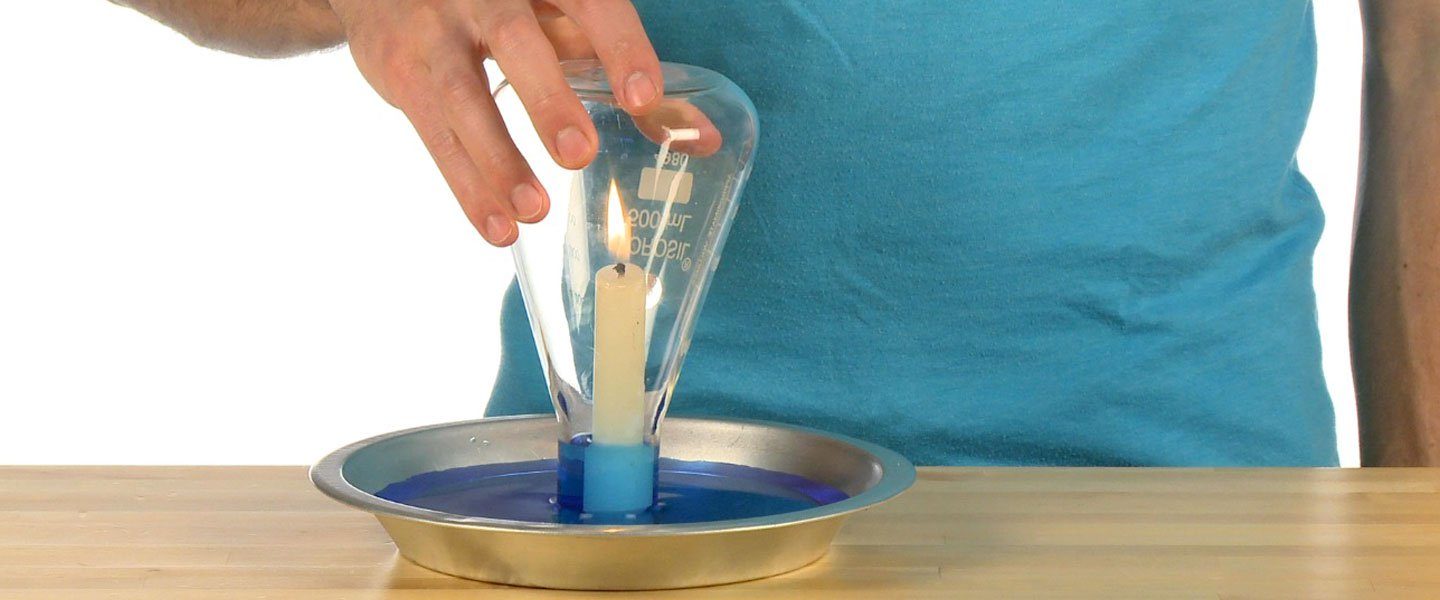
Watch closely and use everything you know about air pressure differences to explain the mystery of the rising water. Look for clues that explain why the water rises into the container. It may not be what you think it is so keep your eyes open as you collect data. The best part is that you’ll likely have to do the experiment several times to confirm how air pressure is involved.
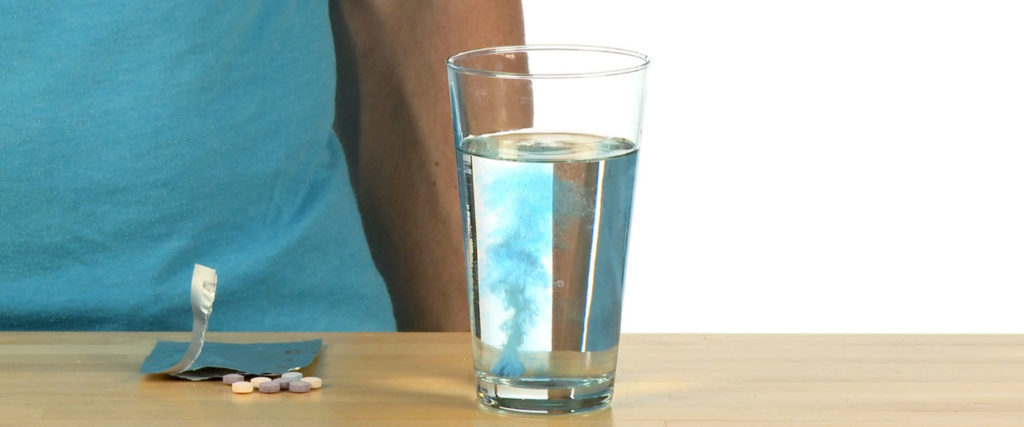
Add 2-3 drops of food coloring to the water. This will make the movement of the water easier to see later. It’s interesting to watch how the drops of coloring spread through the water before stirring it.
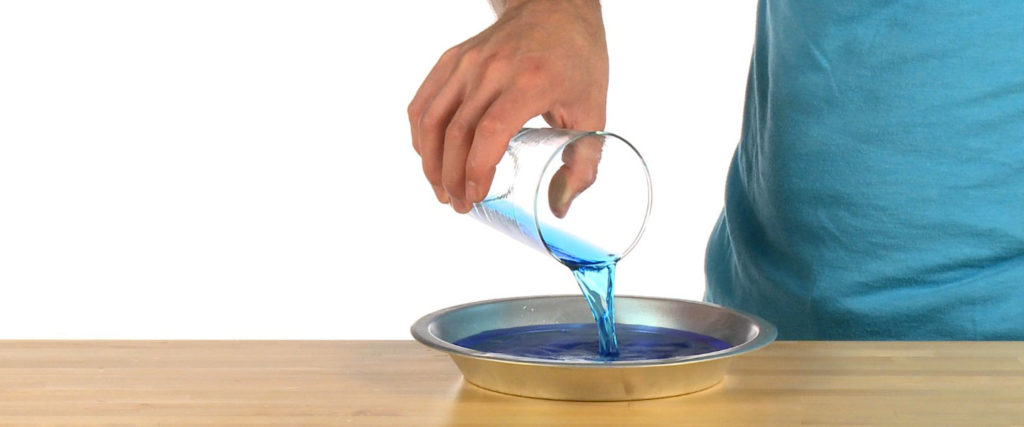
Pour the colored water into the plate. You want about a half-inch (1 cm) deep puddle in the plate. More is OK.
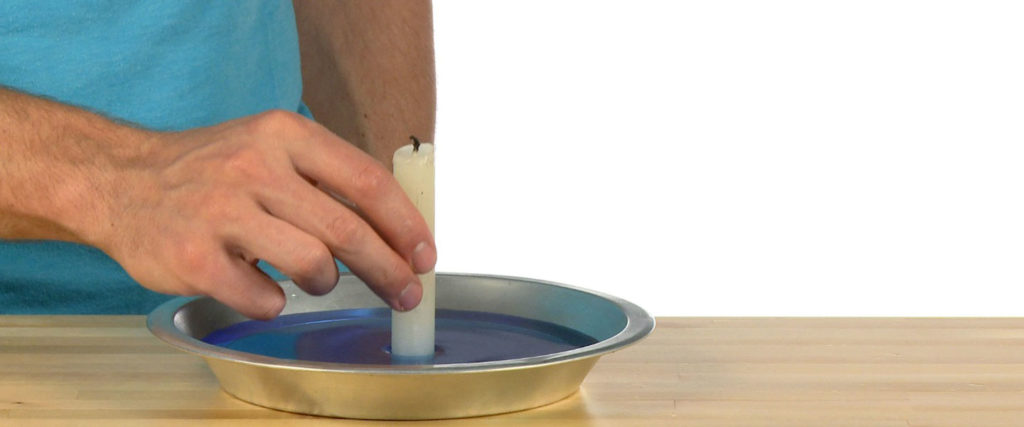
Set the candle straight up in the puddle in the center of the plate. To make sure everything will fit, place the slender container over the candle and into the water. Make sure its base is well above the candle wick and its top edge is submerged under the water. Add water if needed. When you’re happy with the setup, remove the container.
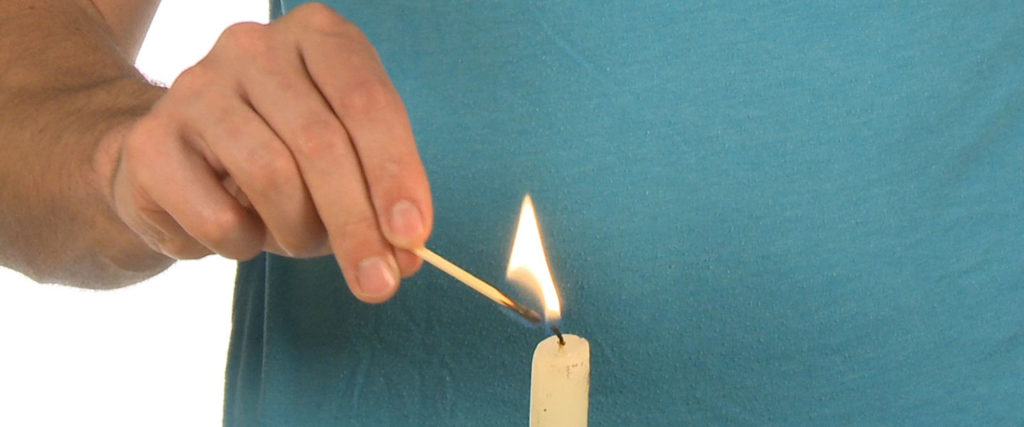
When the candle is stable, the water is calm, and an adult is present, light the candle. The candle flame needs to burn brightly.
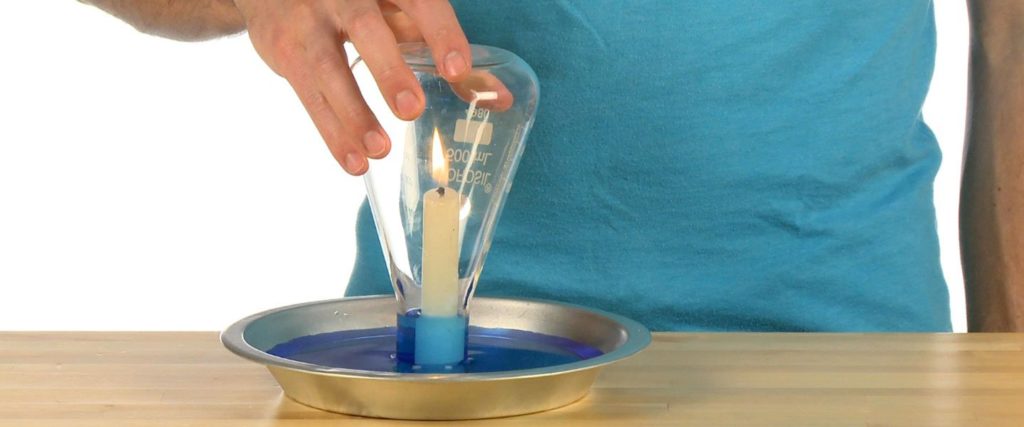
There’s no need to rush this Step; there’s a lot to watch anyway. Turn the container over again and lower it over the burning candle. Place the container on the plate in the water and let go but don’t take your eyes off of the water level inside it. You may see bubbles coming from inside the container. At first, the candle stays burning and the water level rises slowly. About the time the candle goes out, the water rises quickly. This is the mystery: why does it rise?
Repeat the procedure several times so that you can write or draw an explanation as to why the water rises. HINT: The difference in air pressure inside and outside the container is important.
A common misconception is that the consumption of oxygen by the flame in the container is a factor in the water rising. There may be a slight possibility that there would be a tiny rise in the water from the flame using up oxygen but it’s extremely small compared to the actual reason. Simply put, the water would rise imperceptibly at a steady rate as the oxygen were consumed. You likely saw the level rise almost all at once and pretty much after the flame went out.
At first, the flame heats the air inside the container and this hot air expands quickly. Some of the expanding air escapes from under the vase where you might have seen some bubbles. When the flame fades and goes out, the air in the container cools and cooler air contracts or takes up less space. That contraction creates a weak vacuum – or lower pressure – in the container. Where’s the higher pressure? Right! It’s outside the container pressing down on the water in the dish. The outside air pushes water into the container until the pressure is equalized inside and outside the container. The water stops rising when that pressure equalization is reached.